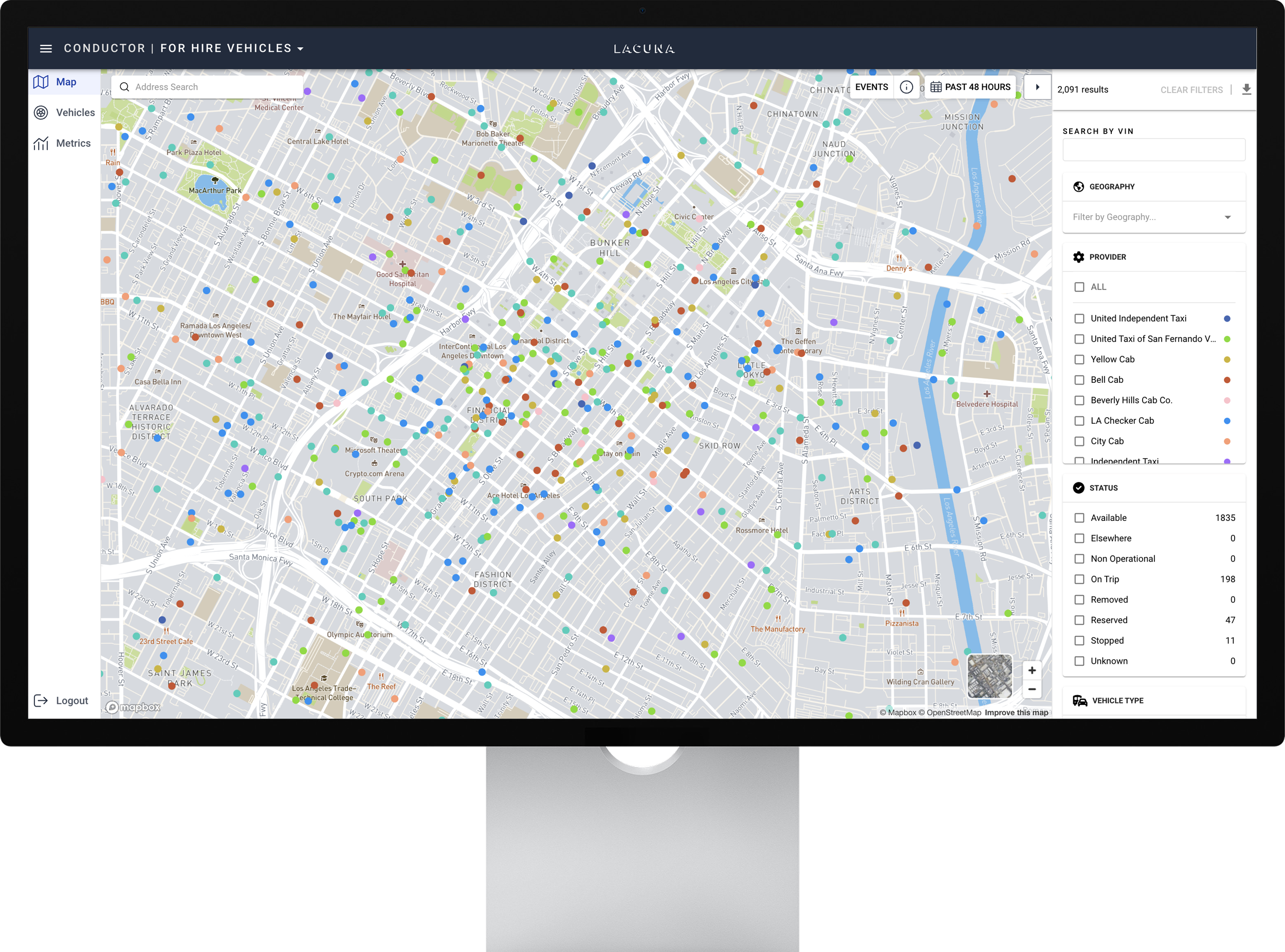Taxi & FHV
When it comes taxi/FHV programs, no two municipalities are alike.
But what's common is a set of often-disparate stakeholders—public agencies, taxi companies, e-hail companies, drivers, and the general public—that all stand to benefit from a new transit operating system.
City Conductor digitally integrates the taxi/for-hire-vehicles (FHV) universe to provide better communication and transparency between each player. Our aim is create stronger relationships that lead to a stronger program—cities and operators working in concert to drive and meet demand, positively affect driver behavior, and maximize earnings for all parties.
When taxis and FHVs are easier to digitally manage…
Cities
…cities can accelerate progress toward safety, equity, and sustainability goals.
Operators & E-Hail Providers
…private partners realize operational efficiencies that positively impact their bottom lines.
Drivers
…drivers spend less time idling, circling, and deadheading, and more time on revenue-generating trips.
Residents
…more residents can enjoy greater access to affordable, reliable taxi and FHV services.
Tools to tackle transportation’s biggest challenges
Example Workflow
Fighting Climate Change
The ideal amount of zero-occupancy for-hire vehicles on the road is none—and cities can make progress toward this sustainability goal by using Conductor’s near-real-time visibility and data metrics capabilities to collect data that illustrates various aspects of driver behavior. For example, to what extent do drivers deadhead to airports and other spots with “easy” fares? Understanding what’s happening on the ground is the first step toward working with operators to find incentives for drivers to make every trip one that serves residents and cuts down on wasteful emissions.
Example Workflow
Increasing Equity
Too often people who use wheelchairs are not as well-served by for-hire vehicles as the able-bodied. For example, wait times after requesting pickup can be considerably longer. City Conductor includes near-real-time visibility into taxis, including an option to filter by wheelchair-accessible vehicles. This enables cities to measure where and how often those vehicles make trips—data they can use to develop policies and operator incentives that bring better access and parity of service to residents with disabilities.
Example Workflow
Growing Economically
When too many for-hire vehicles need to jockey for space at the curb, it serves neither passengers nor operators particularly well. Airport Conductor is designed to right-size the supply and demand of taxis and loading zones, helping travelers get in and out efficiently, and helping drivers spend less time circling and idling and more time on revenue-generating trips.

Looking Ahead
The Future of Taxis:
Advanced Air Mobility
With drones and other vertically-mobile modes on the horizon, cities will soon need modern, efficient ways to integrate them into the existing transportation system. A robust digital infrastructure, will allow aerial mobility companies to fully integrate with ground-based systems using a Transportation Operating System that will create passenger experiences, increased safety, and enable city-wide verti-port construction by:
Connecting
aircraft passengers with last mile connection options, transit times, etc.
Notifying
aircraft operators about ground-based incidents, status of infrastructure
Informing
aircraft operators of local operating policy, hours of operation, noise abatement, etc.
Enabling
city operators and planners to fully integrate aerial mobility into the fabric of transportation




